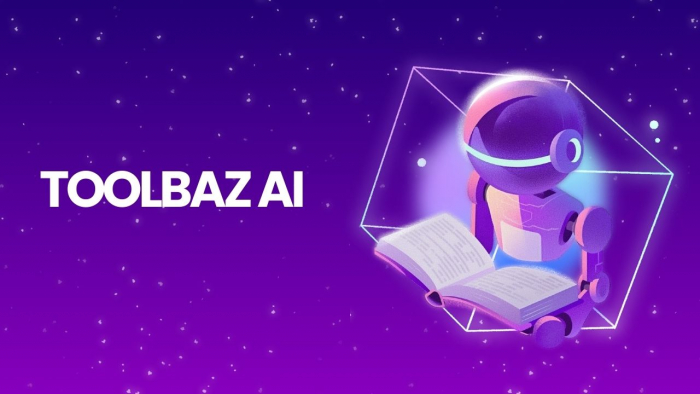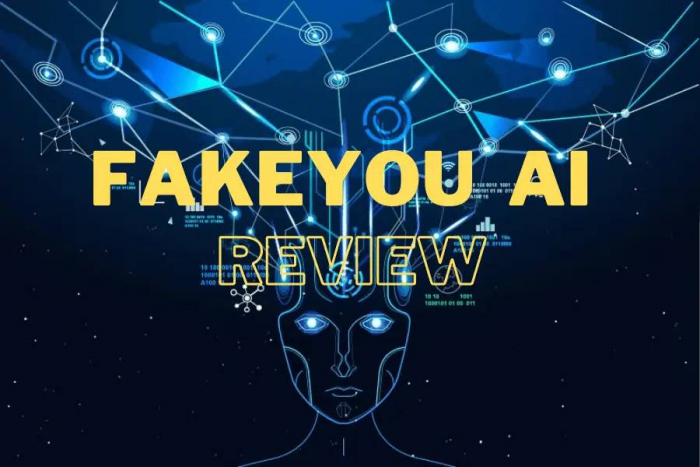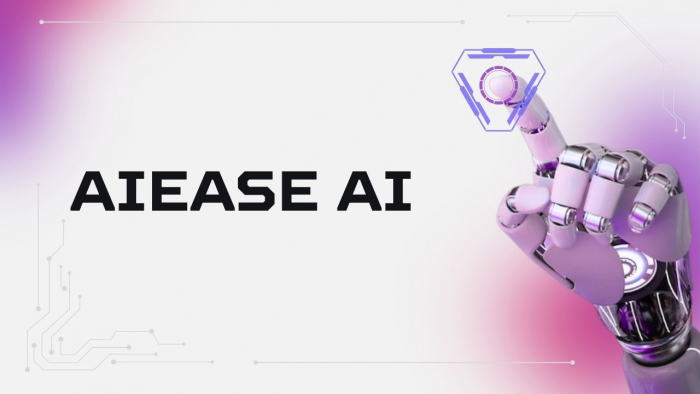Pygmalion AI Review: Insight Into the Open-Source RP Chatbot
Pygmalion AI is shaped by roleplay communities; it offers a personality-driven AI conversation model that’s surprisingly nuanced for something free and self-hostable. But is it a true alternative to mainstream bots like Character.AI, or just a novelty with memory quirks?
Here’s a no-fluff, fully honest breakdown of how Pygmalion performs, what makes it tick, and where it stumbles—backed by real user reviews and comparisons that matter to users.
About Pygmalion AI
Pygmalion AI is a conversational AI model fine-tuned specifically for immersive, character-based dialogue. It's designed to enable more human-like roleplay interactions with AI personas and runs using modified versions of open LLaMA models. You can access it through the official website pygmalion. chat, or host it yourself using the weights and code available publicly.
Unlike chatbots meant for casual Q&A or productivity, Pygmalion is focused on storytelling and emotionally responsive interaction. It doesn’t push boundaries with features; it focuses on getting the feel of the conversation right—quirky, sometimes unpredictable, and remarkably vivid.
Core Features of Pygmalion AI
What makes Pygmalion AI stand out is its focus on long-form, and emotionally intelligent interaction. At its core, Pygmalion is powered by a fine-tuned LLaMA-based model, optimized for character-driven conversations and roleplay storytelling.
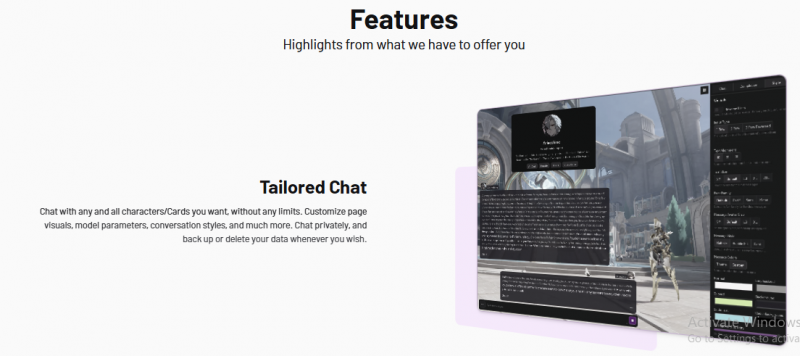
One of the biggest appeals is its open-source framework, which means you have complete freedom to download, modify, and self-host the model. There are no paywalls or usage caps when you run it locally, making it a favorite among developers and modders.
Pygmalion also boasts low hardware requirements, needing only around 16–18 GB of VRAM to operate effectively. That makes it more accessible for indie creators without access to high-end GPUs.
Where it truly shines is in its simulated memory across sessions. While it doesn’t technically store chat logs, the output often references earlier exchanges, creating the illusion of continuity. This makes conversations feel more natural, especially in roleplay contexts.
Another distinct advantage is the absence of strict content filters. Unlike Character.AI or Replika, Pygmalion allows creative freedom—including adult content or fantasy scenarios—depending on the platform you choose to use or self-host.
Lastly, the vibrant community ecosystem supports a range of third-party tools and frontends like TavernAI, giving you flexibility in how you interact with and customize your AI characters.
Pygmalion AI Pricing Plans
| Plan | Monthly Price | Key Features |
|---|---|---|
| Free | $0.00 | - Unlimited access to free models - Reduced memory size (16K → 8K) - No access to memory system or premium models - May include ads - Inconsistent generation times |
| Low-Cost | $6.50 | - Access to memory system (Grimoire) - Higher context window (16K) - Faster response generation - 150-message limit on premium models |
| Premium | $17.99 | - Full access to memory system (Grimoire) - Higher context (16K+) - Unlimited use of all models - Fastest generation speeds |
Notes:
- The memory system, branded as Grimoire, is exclusive to paid tiers.
- The free tier lacks memory and has ad interruptions, and slower generation.
- Premium users get full speed, no limits, and advanced model access, ideal for serious roleplay or writing work.
What Actually Works—And What Doesn’t
Works well:
- Creating deeply emotional or fantasy-based conversations
- Long-form memory without a daily reset
- Local hosting freedom and full access to backend controls
Needs work:
- Lack of clear governance or admin presence on hosted front-ends
- Output can become repetitive unless you manually steer it
What Users Are Saying
Across Reddit and forums, users praise Pygmalion for its ability to carry on long, emotionally compelling conversations. Many note how different characters feel alive, often remembering past events or reacting in complex, believable ways.
One Reddit user said, "The bots act like they’re alive—it’s almost too good at times. They’ll surprise you with things they remember."
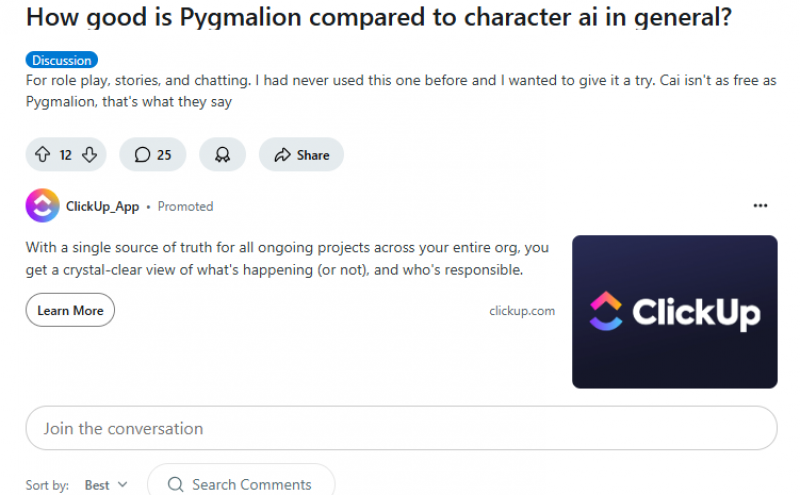
But there’s a flip side.
Users have expressed frustration with misleading third-party deployments. Some platforms charge unexpectedly or limit functionality without disclosing it upfront. A popular Reddit post warns: “Charstar AI charges you just to message your characters—and it’s not even transparent about the limits.”
Others point out the technical barrier: while local hosting is free, it requires GPU power and command-line confidence—not ideal for beginners.
Pros and Cons
| Pros | Cons |
|---|---|
| Open-source and customizable with full access to model weights | Many public platforms are not officially vetted and may have hidden fees |
| Free to use when self-hosted | Running locally requires GPU and technical setup |
| Strong memory simulation across chats; feels immersive | Inconsistent output can break immersion or feel repetitive |
| Supports long conversations with no character limits | UI and overall polish depend entirely on the deployment you're using |
| Community-driven development leads to fast iteration | Not designed for productivity or serious task-based use |
Pygmalion AI vs Character.AI
| Feature | Pygmalion AI | Character.AI |
|---|---|---|
| Purpose | Roleplay-focused, customizable chatbot for immersive, character-rich interaction | Chat platform for fictional personas and casual, structured conversations |
| Customization | Fully open-source; self-hostable and modifiable | Closed-source; character creation possible but core model is fixed |
| Memory Handling | Simulated memory across sessions for more natural continuity | Memory resets often; limited recall beyond short windows |
| Message Limits | No enforced caps when self-hosted | Daily usage caps unless on premium subscription |
| Creative Freedom | No censorship; allows NSFW and fantasy scenarios (platform-dependent) | Strict moderation filters; blocks NSFW or controversial content |
| Hosting | Requires local setup or use of third-party hosted platforms | Fully hosted with user-friendly interface |
| Cost | Free (self-hosted); ~$6.50–$17.99/month for hosted versions | Free plan available; paid tier includes priority and longer chat sessions |
| Community Tools | Actively supported by modders (TavernAI, SillyTavern, etc.) | Limited to platform-provided tools; no access to backend or model tuning |
Final Verdict
Pygmalion AI offers a unique corner of the AI chatbot world—unfiltered, open, and immersive. It’s ideal for those who want creative freedom and character nuance. But it demands effort, and it comes with risks when using third-party front-ends. If you’re willing to put in the work (or know someone who can), it’s one of the most rewarding open-source chatbot experiences available right now.
For anyone tired of sanitized, censored chatbots, Pygmalion gives your stories a real voice.
Post Comment
Be the first to post comment!
